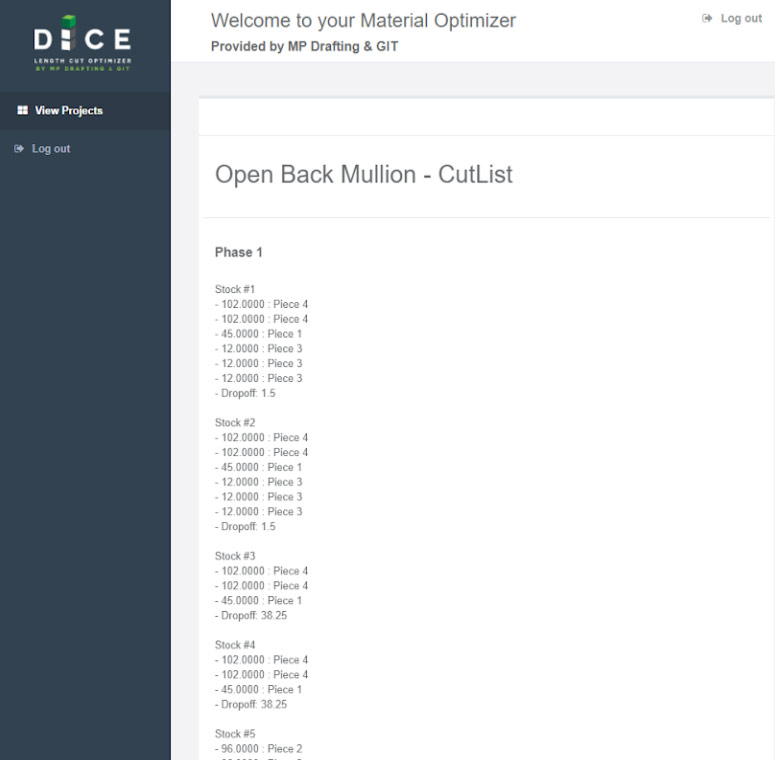Drafting Service Files: Do length cut optimization tools really increase efficiency & reduce waste?
The purpose of a cut optimizer is to reduce material waste, speed up the fabrication process, and increase overall profits.
That’s the theory, anyway. But do they really work as promised?
We set up an experiment to find out, and figure out exactly how much material a length cut optimizer can save you compared to other common cutting methods.
How we Set up the Experiment
We compared three methods used by fabrication shops to cut stock lengths (typically 24’ long) into the desired lengths for construction:
-
Cut like sizes together
When using this method, you simply go down the list of required parts and cut each set of like sizes in sequence. Fabricators using this method focus on maximizing cutting speed but tend to use full-length stocks instead of drops for each cut. This method is simple to implement but not usually very efficient.
-
Cut long pieces first
This method is used more often than the first and is widely believed to be more efficient (we’ll test this to find out for sure). Fabricators using this method cut longer lengths first then go back to cut smaller pieces from the drops until there are none left. Full lengths are used if there are no drops left and more small parts need to be cut.
-
Use a cut optimization tool
Cut optimization programs use an algorithm to calculate the most efficient cutting order based on input cut lengths and quantities. The program will mix and match cut sizes as appropriate to ensure the least amount of material is used.
The goal of the experiment was to determine which cutting method results in the least amount of wasted material — specifically, the lowest number of stock lengths.
The Results
We tested each cutting method using the quantities and cut lengths in the table below.

We found that material waste was highest when cutting using the ‘like sizes’ method and lowest when using a cut optimizer. Here are the results of the experiment:
- Like sizes:
Wasted material: 21% (16 stock lengths) - Long pieces first:
Wasted material: 9% (14 stock lengths) - Cut optimization tool:
Wasted material: 2.7% (13 stock lengths)
The Last Word
The cut optimizer is the clear winner, resulting in just 2.7% scrap material. That results in tremendous savings when compared to cutting like or long pieces first.
It can be difficult to convince fabricators that optimization program work, but the data is undeniable: Cut optimization tools are effective at reducing material needs and cutting times for a given project. However, if you want to start using one at your shop, you’ll need the support of your shop personnel. Luckily, the software (like DICE) is easy to use: just input your required cut lengths and quantities and the program will output a report with simple cutting instructions (see the image below for an example).

The cutting report lists the cuts to make for each length of stock. It also displays the piece # for each cut and the length of the dropoff for each stock. Note that the dropoff is very small: the goal of the algorithm is to minimize waste.
Need Help Navigating This Thorny Issue?
MP Drafting personnel have been trained to identify any deviations during the shop drawing preparation phase and to call out these changes to the project manager and in writing on the shop drawings directly.
If you’re looking for a new third-party drafting resource, give our team a try. We work exclusively with glass and glazing contractors.


